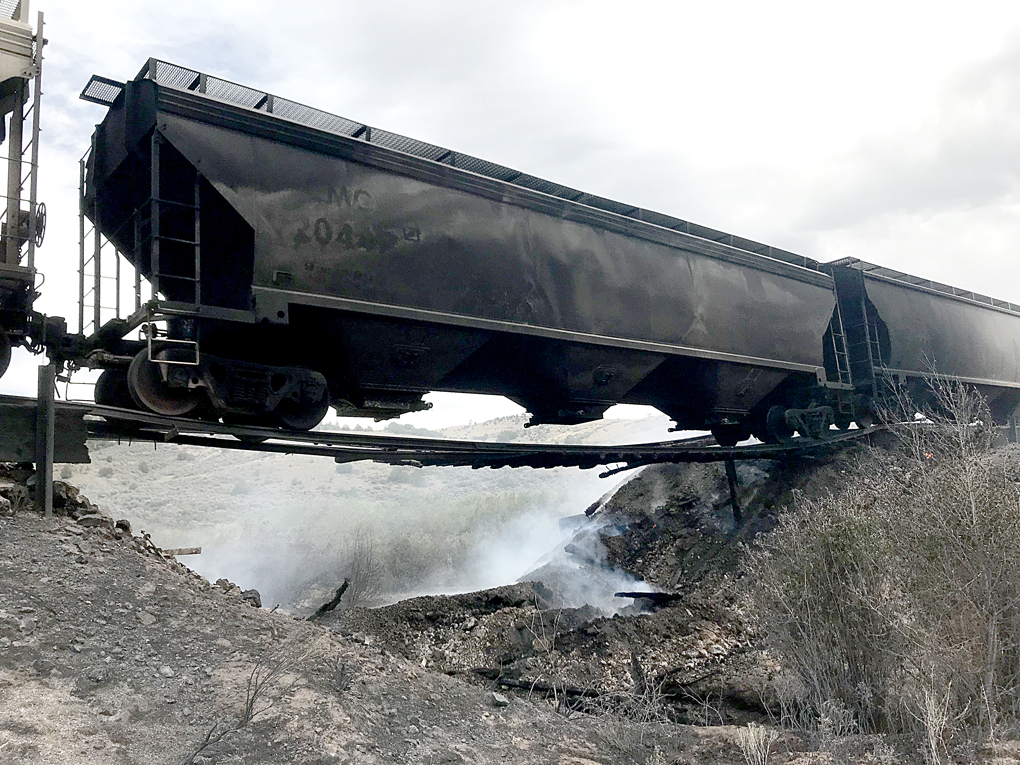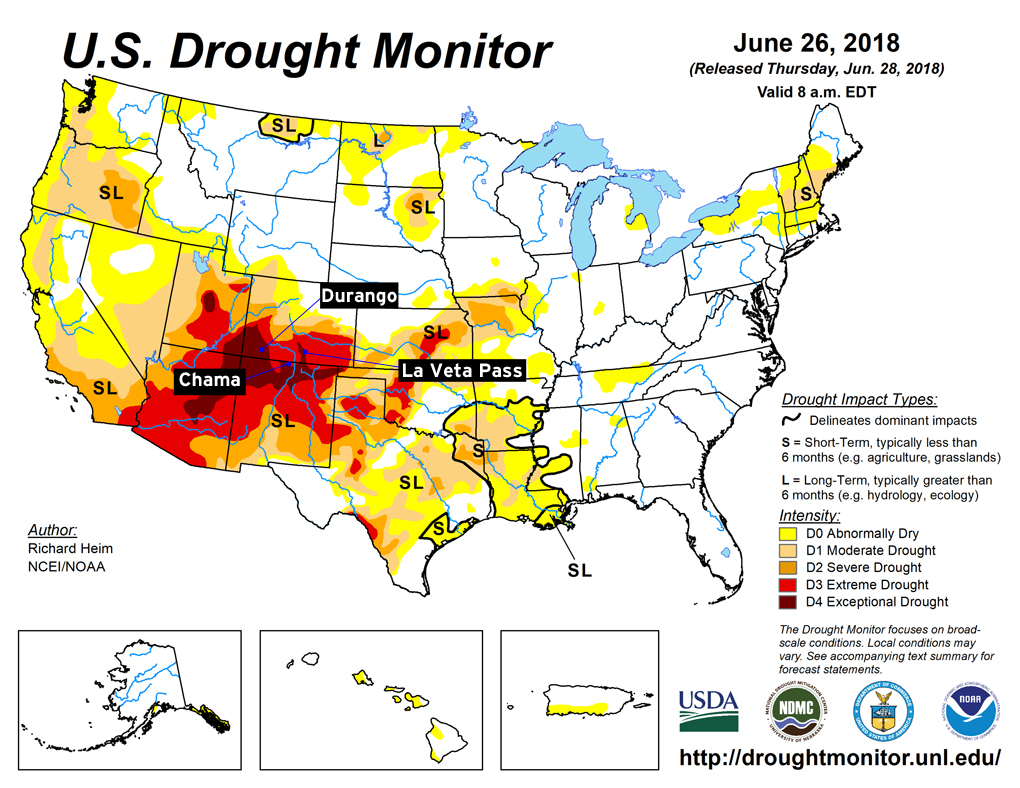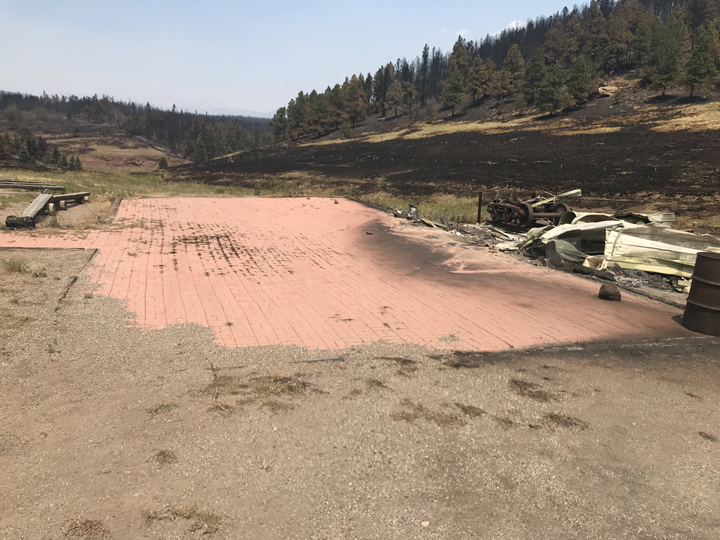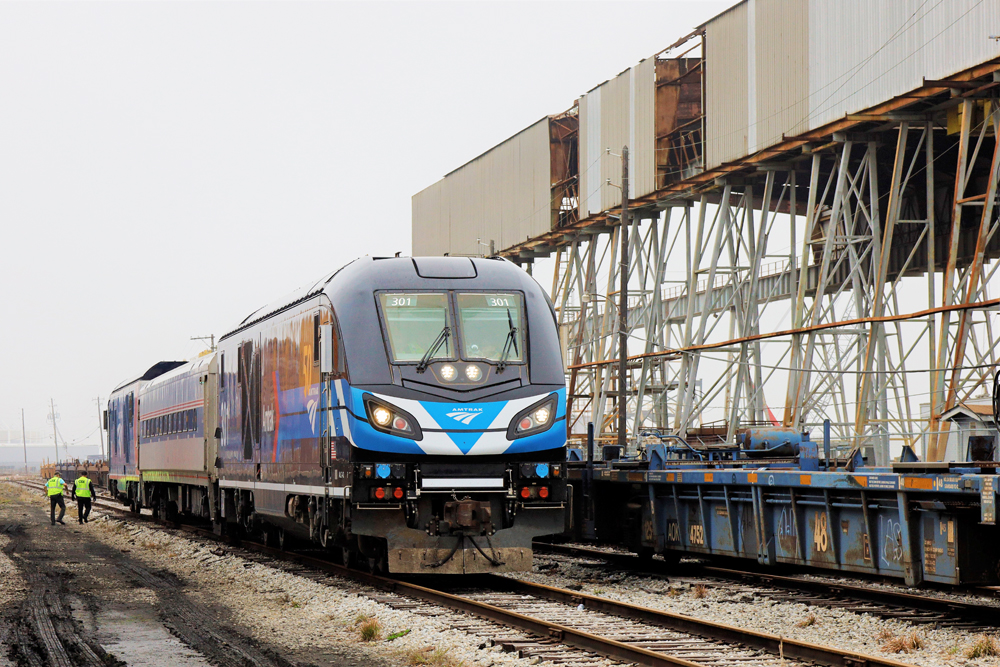The most recent wildfire, called the Spring Creek Fire, started on June 27 just east of Fort Garland, Colo. It has since ravaged 95,000 acres in Costilla and Huerfano counties. At 5 percent containment and with unfavorable weather in the forecast, the fire doesn’t look like to be doused anytime soon. A man suspected of starting the fire was arrested July 2 and is under investigation.
Iowa Pacific runs the 150-mile-long San Luis & Rio Grande freight line and the Rio Grande Scenic excursion railroad, both of which pass through the heart of the Spring Creek Fire devastation. According to Iowa Pacific’s president, Ed Ellis, the railroad lost a bridge and a freight car at Sierra, Colo., about 40 miles east of Alamosa, and the entire stage at its Fir-Summit music venue.
“Our first priority is to get the railroad back in service and get cars moving,” Ellis tells Trains News Wire. Contractors are already on-site replacing the bridge temporarily with fill and a culvert. He hopes to have service up by Friday.
While the total damages to the company’s assets haven’t yet been tallied, Ellis estimates the cost to be around $1 million. While insured, Iowa Pacific will have to overcome a substantial deductible. Rio Grande started a crowdfunding page on GoFundMe.com to solicit donations and raise funds to help rebuild the Fir Concert Stage. More than 300 concerts have been performed at Fir during the past 10 years and has become a major attraction for tourists.
Ellis points out that as fierce as the fire has been, the damage has been limited to property loss.
“With all the evacuations, homes destroyed, and firefighters on the ground, we’re just happy no one has been hurt,” Ellis said.
To the west, the 416 Fire ignited 13 miles north of Durango, Colo., on the morning of June 1. During the last month, it’s burned more than 54,000 acres, caused $27 million in damage, and is now about 45 percent contained. Farther west, the Burro Fire, detected on June 8, has burned 4,500 acres and is 40 percent contained.
The Durango & Silverton Narrow Gauge tourist railroad, based in Durango, suspended steam operations until July 12. It had previously hoped to resume operations on July 4. In lieu of steam-powered tours, the railroad has been operating limited distance excursions with diesel locomotives since June 22. According to a D&SNGRR spokesperson, the Burro Fire has not had an impact on operations, and the company does not expect it to.
One hundred fifty miles east of Durango, the Cumbres & Toltec Scenic Railroad, owned jointly by the Colorado and New Mexico, runs from Antonito, Colo., to Chama, N.M. While not in immediate danger from the 416 or Spring Creek fires, the Cumbres & Toltec is a popular coal-burning steam tourist railroad. As such, it has measures in place to mitigate the possibility of hot ash starting a wildfire.
According to documentation supplied by Cumbres & Toltec, all employees must complete wildfire training with the New Mexico State Forestry Division. Two fire patrol cars equipped with a water tank and pump follow each departing train for the length of the journey, similar to what was used on the Durango & Silverton. Additionally, the company owns and operates its own firetruck and tanker, engages in regular brush clearing along the line sides, and maintains an 8-foot ballast profile on both sides of the tracks. Besides the occasional small fire quickly extinguished that is common with coal-fired steam railroads, C&TS says it has never had a major fire on its line.
As for business, John Bush, C&TS president and general manager, says the company is doing well, despite the challenges the fires pose, particularly Spring Creek.
“Ridership is up fairly significantly for June,” he said. “We’ve been running steam trains every day.”
One small point of irritation has been the confusion in media reports of Chama, Colo., which has been evacuated in the wake of the Spring Creek fire, with Chama, N.M., which has not been evacuated and serves as headquarters for C&TS.
Bush says that the fire situation up to now for the C&TS is well under control.
“We are exceedingly proud of the performance of all our people,” he said.

















It is a theory and supposition. It has never been proven. Very likely a supporting cause, but not proven to be THE cause. Conversely no one has proven that man isn’t at fault. More likely another cycle the is going through. We do not have ‘data’ beyond maybe 120 years so how can anyone claim anything other than likely without proof.
1. Solar activity is monitored and records are kept.
2. CO2 levels in our atmosphere have been recorded for many years, and have risen dramatically since heavy use of fossil fuels has increased.
3. Increase in CO2 levels cause a measurable “greenhouse effect”. This is a proven repeatable fact.
Now what the combined effects on all this are on our climate is more difficult to determine-climate, weather, and atmospheric behavior are extremely complex and difficult to model. Our great grandkids may be able to laugh at the “global warming crisis or they may curse our profligate use of fossil fuels and reduction in methane emission regulation. We won’t have to worry about it.
PR
Daniel Kelly: O.K. ‘Man-made global warming is a proven scientific fact’ – how much of the (supposed) global-warming is attributable to (and proven to be so w/scientific data) ‘man-made’ activities as opposed to natural activities (solar flares, other naturally occurring phenomena)?
That question has never been conclusively answered…
Man made global warming is a proven scientific fact.
Expect more wildfires in the future.